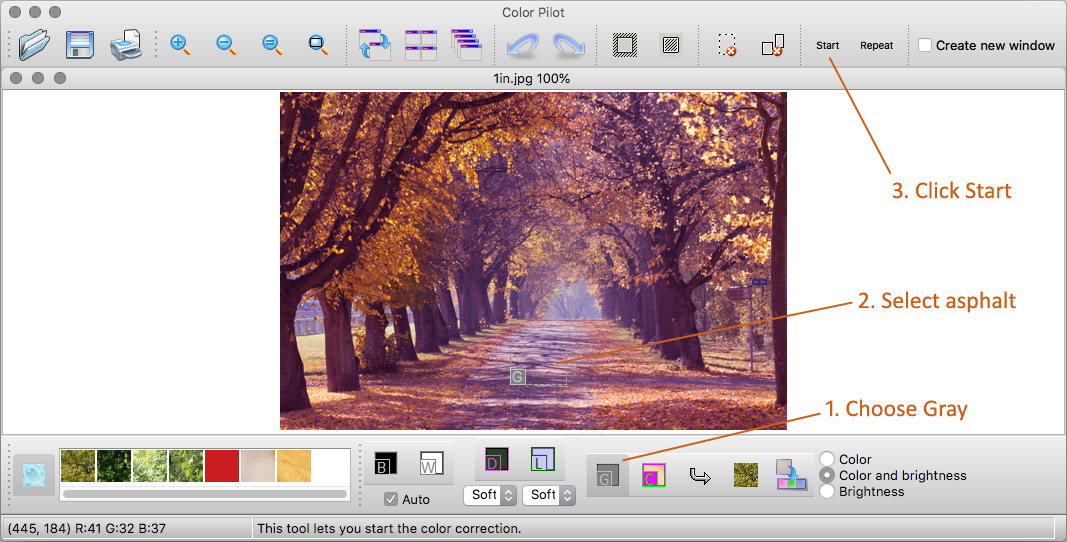

Color shift for mac software#
But even for those who do not recognize this issue or even know about it, there is a potential risk to take a screenshot once in a while, edit it in Photo and get not exactly what one would expect from professional software without even noticing. Because not everybody takes a screenshot from a document and pastes it straight back just to see the slight color shift. But I think this screenshot issue is one annoying thing that may not affect much people. Considering other softwares are around for 20+ Years. I see that Affinity is kind of the new kid on the block and therefore can not (yet 😜) kick ass in every department.
Color shift for mac code#
The colors work just fine and Gimp takes care of the profile conversion.īecause Gimp is open source, would it be an option to take a look inside Gimp's source code to check out how they handle color profiles in the "New Document From Clipboard" function and translate it to Affinity's code base?
Color shift for mac mac os#
Since this problem is still around (iMac Pro 2017, Affinity 1.9, MAC OS Catalina) I want to bring up a suggestion.

Time permitting, I will see if I can find the "Color LCD" profile from in my very, very old MacBook & copy it into the iMac's folder & see if that causes any issues. None of them cause any issues with screen captures or anything else in Affinity or any other app. Just curious, but does your iMac display profile include a hexadecimal suffix like in last screenshot, or is it just "iMac" with no suffix? As I understand it, ones with the suffix indicate a profile for a specific iMac, either those made with Apple's Display Calibrator app or for certain iMacs like my old 2012 model, those that came with an individually factory calibrated profile for their screens.Īlso, for what little it is worth, I added several really old (circa 2011) display profiles to my iMac's Library/ColorSync/Profiles/Displays folder from Time Machine backups, including for an old Sony CPD-200ES monitor & generic ones for VGA & NTSC/PAL tv's. If you do wish to keep it, I can give you another iMac profile to use, which is identical to the factory profile but it will enable Affinity to not be confused. Several web sources suggest it should be deleted if present at that path on an iMac to avoid issues, although there isn't any specific info I can find about what those issues might be. Regardless, there doesn't seem to be any good reason for there to be a "Color LCD" profile in /Library/ColorSync/Profiles/Displays on any iMac (since it won't match the characteristics of the iMac's screen & is probably an older one from some Mac laptop anyway). I checked my iMac bootable backup disks for 10.12.x 10.11.x & also in Time Machine backups for my iMac going as far back as 2014, & none of them have a "Color LCD" profile anywhere on them that I can find, not even in System/Library/ColorSync.Ī web search tells me that the "Color LCD" profile is Apple's factory default display profile for laptop Macs, & that the name as displayed in System Preferences > Display > Color tab applies to several different ones depending on the laptop it shipped with (so for example, it is nearly identical to the "Display P3" factory default profile for the 2017 MBP's but not for older MacBooks that don't have as wide a gamut screen).

My 10.13.6 installation does not contain a non-P3 "Color LCD" display profile alongside the P3 "iMac" display profile, but the 10.12.6 does.įWIW, I am not sure why any iMac would include a "Color LCD" profile in /Library/ColorSync/Profiles/Displays, other than maybe if files were copied from a laptop Mac at some point, like with migration assistant or manually by a user.


 0 kommentar(er)
0 kommentar(er)
